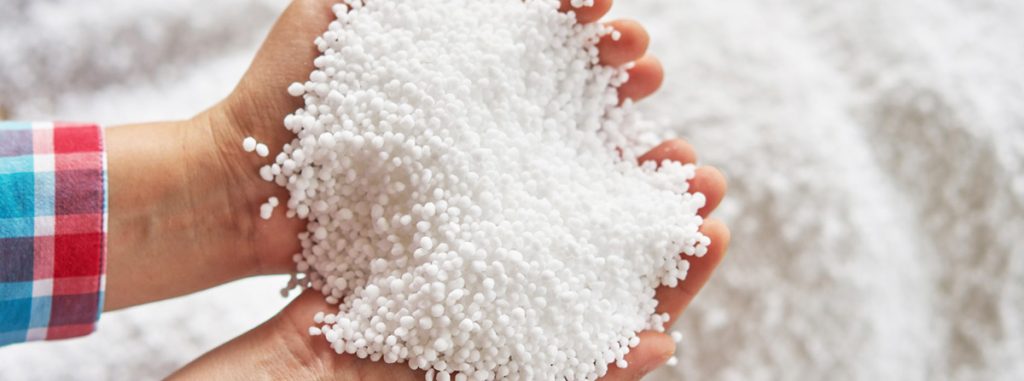Urea is an organic compound with the chemical formula CO(NH₂)₂. It is a white, odorless, and water-soluble solid that is commonly used in agriculture, industry, and medicine.
Urea is produced in the liver as a waste product when the body breaks down proteins and amino acids. It is then excreted in the urine and can be collected and processed for various applications.
Some of the most common uses of urea include:
- Fertilizer: Urea is a major component in many commercial fertilizers. It provides plants with a source of nitrogen, which is essential for their growth and development.
- Animal feed: Urea is sometimes added to animal feed as a source of protein. It can also be used as a feed supplement to improve the digestibility of other nutrients.
- Industrial applications: Urea is used in various industrial processes, such as the production of plastics, adhesives, and resins. It is also used in the manufacture of certain types of textiles, such as polyester.
- Medical applications: Urea is used in some topical creams and ointments to treat skin conditions such as eczema and psoriasis. It has also been used to treat certain types of fungal infections.
- Automotive industry: Urea is used as a component of diesel exhaust fluid (DEF), which is added to diesel engines to reduce emissions of nitrogen oxides (NOx).
Urea is a versatile and widely used compound that has many different applications. However, it is important to handle and store urea properly to prevent it from reacting with other chemicals or releasing toxic fumes. When used as a fertilizer, it is important to follow the recommended application rates to prevent overuse and potential environmental damage.
Urea is available in several different grades, each of which is designed for specific applications. The most common grades of urea include:

- Agricultural grade: This grade of urea is typically used as a fertilizer in agriculture. It is generally less pure than other grades of urea and may contain impurities that are not suitable for other applications.
- Technical grade: This grade of urea is used in various industrial applications, such as the production of resins, adhesives, and plastics. It is generally more pure than agricultural grade urea and is often used as a raw material in chemical manufacturing.
- Feed grade: This grade of urea is used as a source of protein in animal feed. It is typically more pure than agricultural grade urea and is free from impurities that may be harmful to animals.
- Pharmaceutical grade: This grade of urea is used in the manufacture of pharmaceuticals and medical products. It is highly pure and free from impurities that may be harmful to human health.
- Diesel exhaust fluid (DEF) grade: This grade of urea is specifically designed for use in diesel engines with selective catalytic reduction (SCR) systems. It is highly pure and free from impurities that may interfere with the performance of the SCR system.
Each grade of urea is produced to meet specific quality and purity standards, depending on the intended application. It is important to use the appropriate grade of urea for a given application to ensure its safety and effectiveness.
Technical grade urea is a type of urea that is used in various industrial applications, such as the production of resins, adhesives, and plastics. This grade of urea is typically more pure than agricultural grade urea and is often used as a raw material in chemical manufacturing.
Technical grade urea is produced using a high-pressure process that involves reacting ammonia with carbon dioxide. The resulting urea is then purified to remove impurities and ensure its quality and consistency.
Technical grade urea is a white, odorless, and water-soluble solid that is typically sold in granular or prilled form. It has a nitrogen content of approximately 46%, which makes it a valuable source of nitrogen for various industrial processes.
Some of the most common uses of technical grade urea include:
- Production of resins: Urea is used as a raw material in the production of various types of resins, such as urea-formaldehyde resins, which are used in the manufacture of particleboard, plywood, and other wood products.
- Adhesives: Urea is used as a binding agent in the production of various types of adhesives, such as those used in the woodworking industry.
- Plastics: Urea is used as a raw material in the production of various types of plastics, such as melamine-formaldehyde resins, which are used in the manufacture of kitchenware, electrical appliances, and other consumer products.
- Dyes: Urea is used in the production of certain types of dyes, such as indigo dyes, which are used in the textile industry.
Technical grade urea is an important industrial chemical that is used in a wide range of applications. It is important to handle and store technical grade urea properly to prevent it from reacting with other chemicals or releasing toxic fumes. When used in industrial processes, it is important to follow the recommended safety guidelines and use appropriate protective equipment to prevent exposure to the chemical.
Applications:
- Raw material for other fertilizers production
- Manufacturing of melamine used in melamine-methanol resins (used for the synthesis of melamine through a chemical reaction involving urea and formaldehyde.)
- Formation of important resins (urea-formaldehyde resin)
- Use in reducing air pollution from diesel engines in cars, buses, and lorries
Packing:
- Bulk
- Jambo
- 50 kg bags

